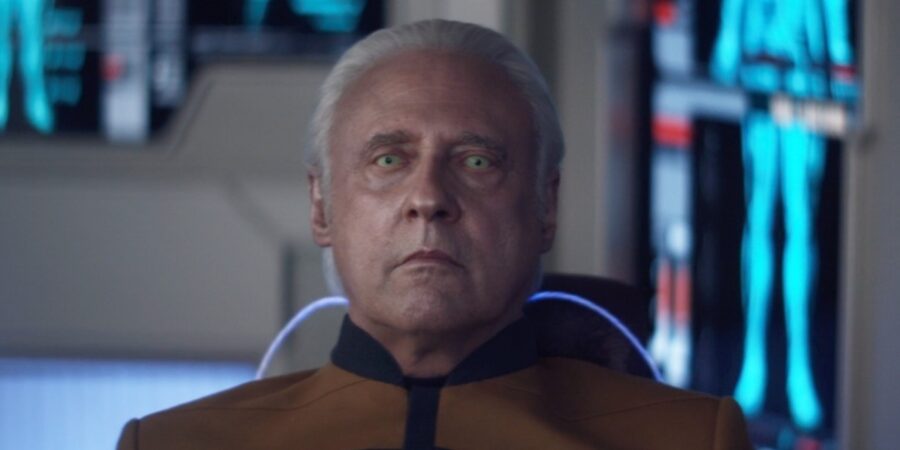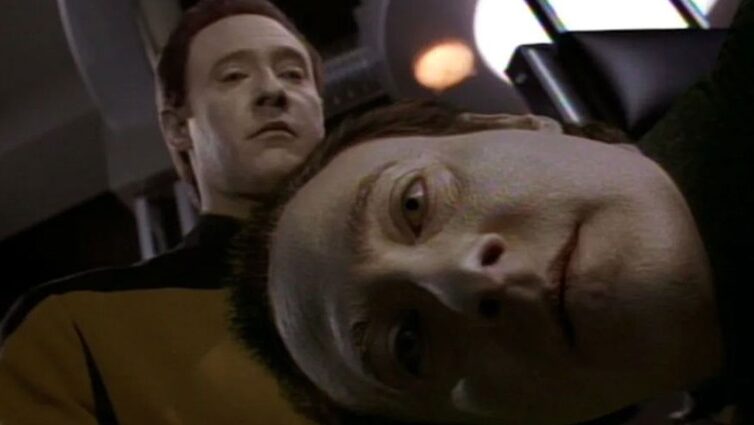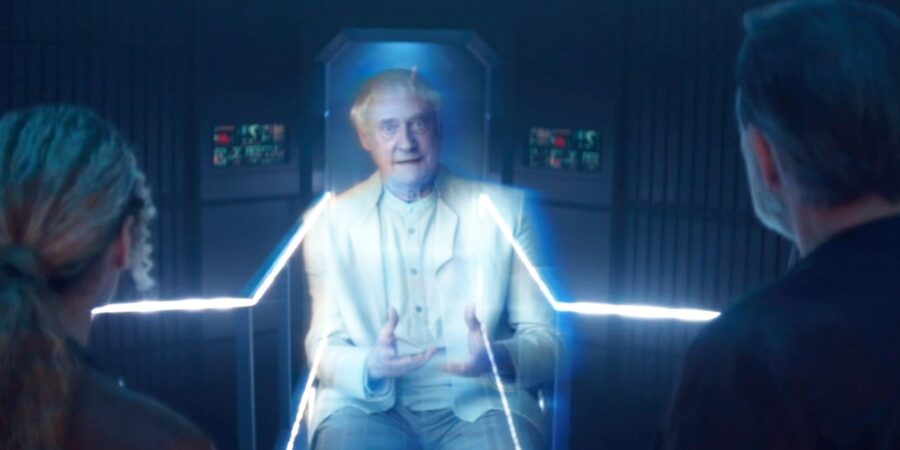Star Trek Betrayed Its Best Hero
By resurrecting Data in Picard, Star Trek has betrayed the character and missed some wonderful opportunities.

Apparently, Paramount has learned some marketing tricks from Marvel Studios. In spite of clearly teasing that Brent Spiner would be playing the malevolent Lore in the third and final season of Star Trek: Picard, in “The Bounty” we learn that Data has once more been revived in a new body that he shares with other disparate personalities. This is a betrayal of the spirit of the character because by once more resurrecting Data, Star Trek has robbed him of the very thing he sought for so long: humanity.
I can’t take credit for this insight, by the way, it was pointed out by the TikTok influencer Lt.com.Rae who posted about her issue with this new version of Data.
In the two-part Star Trek: The Next Generation episode “Time’s Arrow,” what appears to be Data’s deactivated head is recovered in a cave full of 19th century relics, which convinces the android that at some point he will be sent back to the past and will die. When Geordi (LeVar Burton) reaches out to Data, worrying the android is upset about his death, Data says he actually finds it “comforting.” Up until that point, he tells Geordi, the potential that he could be immortal only reinforced the fact that he was “artificial” rather than human.
By bringing him back to life twice, Star Trek: Picard has upheld the notion that Data is “artificial” — just a soulless machine who can be brought back again and again with enough elbow grease. That’s the biggest reason this new Composite Data is a mistake, but far from the only one.
I was surprised at how disappointed I was to learn that, instead of Lore, Star Trek: Picard was giving us a mishmash of Data, Lore, B-4, etc. I realized it was because finding out how Lore might fit in with older TNG crew — perhaps even returning for a redemption arc — was one of the most intriguing questions I had about this final season. Like Marvel‘s often misleading marketing, the trailers for Picard‘s final season worked hard to fuel that anticipation.

Would there be narrative hurdles to bringing back Lore and just Lore? Maybe, but they’d be far from insurmountable. Lore was deactivated in his final TNG appearance, the two-part “Descent,” but it isn’t like he was melted down for scrap; there was never any indication his deactivation was any more final than when Riker (Jonathan Frakes) made his dramatic hitting of Data’s off-switch in TNG‘s “The Measure of a Man.”
It’s just as believable that Starfleet Intelligence would’ve secretly used Lore to run Daystrom Station’s security as it is they’d secure Altan Soong’s research to do so. Speaking of Soong, the explanation we get is at best incomplete, and at worst nonsensical.
Why would he incorporate the personalities of Lore or B-4 into this new Composite Data? B-4 was extremely limited. And long before Star Trek: Picard Data was able to get real emotions and control over them, which had previously been the only potentially useful thing Lore would’ve been able to add to the mix.

I think it’s clear the only reason Star Trek: Picard chose this Composite Data over Lore was because of the challenge posed by an older Brent Spiner. The de-aging in Season 1 of Picard was not exactly seamless, after all.
Still, I think something could’ve been figured out in Star Trek: Picard to bring back Lore instead of Data. A fairly easy explanation was used to explain the aging of Guinan (Whoopi Goldberg) and Q (John de Lancie) in Season 2, after all. Perhaps Lore would have chosen to change his appearance, like Data does in the TNG series finale.
If you’ve read this far, you may find it tough to believe I am actually loving the final season of Star Trek: Picard in spite of what’s been done to Data. But it’s true. I plan to keep streaming it on Paramount+ first thing every Thursday morning until it’s over, and then I’ll watch it all again; but I won’t ignore the mistakes and this was one of them.












